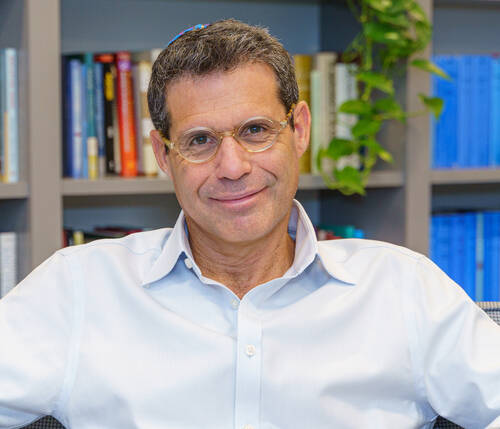The Future of Judaism
The Future of Judaism

Finally, some good news. According to a new study published by the American Jewish Population Project (AJPP) at Brandeis University, the Jewish population in the United States was almost 8 million in 2020—up from 5.5 million in the 90s.
I am so used to articles filled with doom and gloom regarding the future of American Jewry that I was skeptical at first about the report. But I shouldn’t have been. While one can find signs of decline in the vitality of some Jewish institutions as well as participation in public Jewish life, there are indeed many positive signs to offset the negative trends; for example, the growing number of Jews who study Judaism, and those who identify with Israel (more than a million young Americans have participated in Birthright).
On May 5, 1964, Look Magazine, which at the time was the number two weekly magazine in America behind Life Magazine, ran a cover story titled “The Vanishing American Jew”. The article explained why in all certainty there would no longer be any Jews in the United States in the 21st century. The article detailed four main points:
• New studies reveal loss of Jewish identity amid soaring rate of intermarriage.
• Judaism may be losing 70 percent of children born to mixed couples.
• Because of low birthrates, Jews are “scarcely reproducing themselves.”
• Jews may fade from 2.9% to 1.6% of the U.S. population by the year 2000.
The article was right about the rate of intermarriage, but it was wrong about its future ramifications. In the 1990s, only 26% of children of interfaith marriages identified themselves as Jews. But the course has sharply reversed, as today 70% of those children receive Jewish education and identify themselves as Jews.
Despite the good news, I would encourage us to wait with the champagne. It is true that the Jewish people continue to thrive, while Look Magazine disappeared in 1971, but there is a lot of work to be done. One of the problems, according to Dr. Saxe, the head of the Jewish Population Project, is that “plenty of Jews aren’t part of the community and have little knowledge about Judaism.” We all know he is right. They say they are Jewish, they feel Jewish, they are proud of being Jewish (even in light of the growing antisemitism, or for some, I believe, as a reaction to it), but still…something is missing.
We can wait for the large Jewish organizations to solve those problems, and many of them work hard at doing so. But we also must ask ourselves, in any of our capacities as parents, grandparents, members of Jewish organizations, and Jews who care…what can we do? I always believed, and still do, that most Jews want to strengthen their Jewish connections and expand their Jewish knowledge, and will do so if it is accessible. Judaism begins at home, and one doesn’t need to follow all 613 commandments to raise a Jewish family. And it continues with the community. Now more than ever before, in addition to synagogues and JCCs, there are dozens of Jewish organizations small and large, in person and online, cultural and religious, that can become a home to any Jewish person. I pray that the next survey will not only show that our numbers grew, but also the depth and meaningfulness of our Jewish identity.
Fri, October 17 2025
25 Tishrei 5786
Upcoming Events
-
Saturday ,
OctOctober 18 , 2025Men's Club Weekly Walk & Brunch
Shabbat, Oct 18th 9:30a to 11:00a
-
Monday ,
OctOctober 20 , 2025Cooking for St. George
Monday, Oct 20th 8:30a to 10:00a
-
Monday ,
OctOctober 20 , 2025Men's Monday Weekly Lunches
Monday, Oct 20th 12:00p to 2:00p
-
Tuesday ,
OctOctober 21 , 2025Yoga with Yael
Tuesday, Oct 21st 10:00a to 11:00a
-
Tuesday ,
OctOctober 21 , 2025Sisterhood Lunch Out with Carole
Tuesday, Oct 21st 12:00p to 2:00p
-
Tuesday ,
OctOctober 21 , 2025Board of Directors Meeting
Tuesday, Oct 21st 6:30p to 7:30p
-
Wednesday ,
OctOctober 22 , 2025Mah Jongg
Wednesday, Oct 22nd 1:00p to 4:00p
-
Thursday ,
OctOctober 23 , 2025Seasons of Strength in Mussar
Thursday, Oct 23rd 11:00a to 12:30p
-
Thursday ,
OctOctober 23 , 2025Canasta
Thursday, Oct 23rd 1:00p to 3:30p
-
Friday ,
OctOctober 24 , 2025Shabbat Services
Friday, Oct 24th 6:30p to 7:30p
Update this content.
Come Together
Something meaningful and dynamic is happening here at Temple Beth Am. It springs from the warmth of our welcome and the energy of our actions. We call it: Kulanu - All of Us Together.
Join UsUpcoming Events
-
Saturday ,
OctOctober 18 , 2025Men's Club Weekly Walk & Brunch
Shabbat, Oct 18th 9:30a to 11:00a
-
Monday ,
OctOctober 20 , 2025Cooking for St. George
Monday, Oct 20th 8:30a to 10:00a
-
Monday ,
OctOctober 20 , 2025Men's Monday Weekly Lunches
Monday, Oct 20th 12:00p to 2:00p
-
Tuesday ,
OctOctober 21 , 2025Yoga with Yael
Tuesday, Oct 21st 10:00a to 11:00a
-
Tuesday ,
OctOctober 21 , 2025Sisterhood Lunch Out with Carole
Tuesday, Oct 21st 12:00p to 2:00p
Privacy Settings | Privacy Policy | Member Terms
©2025 All rights reserved. Find out more about ShulCloud

